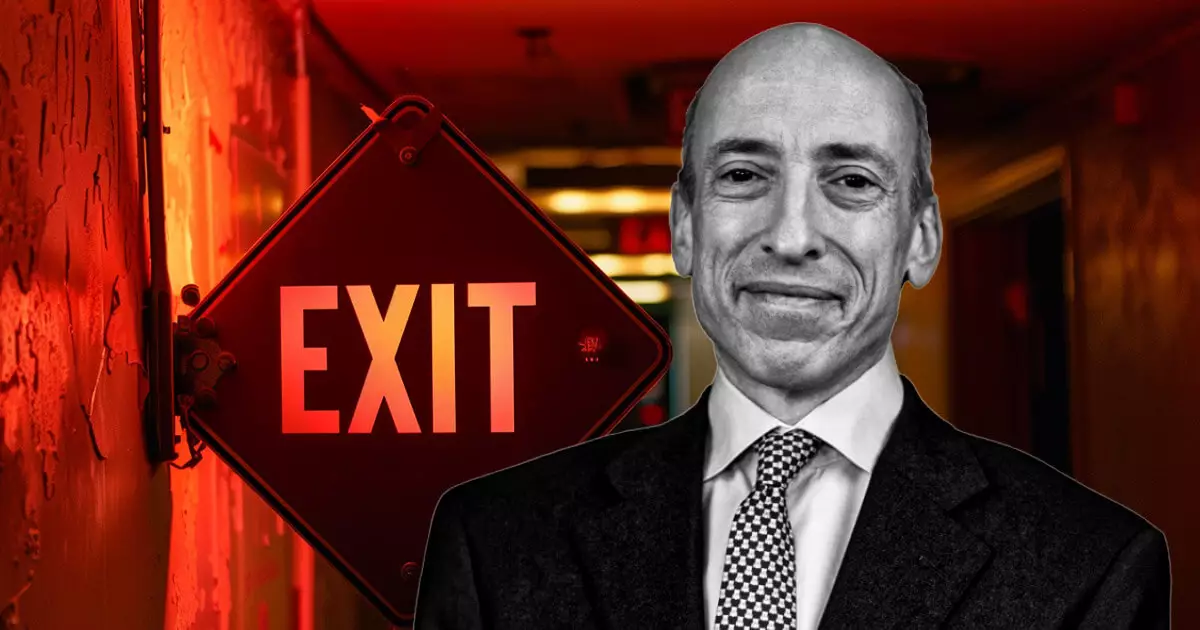Gary Gensler’s upcoming departure from his position as Chairman of the U.S. Securities and Exchange Commission (SEC) marks a significant turning point for both the agency and the broader financial landscape. Announced to step down on January 20, 2025—the day President-elect Donald Trump is set to assume office—Gensler’s legacy is intertwined with a critical period of regulatory scrutiny, especially concerning the burgeoning cryptocurrency market. Having taken the helm in April 2021, he reflected on his time at the SEC as an “honor,” highlighting the agency’s mission-driven approach in safeguarding investors and facilitating capital formation.
Under Gensler’s leadership, the SEC not only endeavored to protect everyday investors but also grappled with the complexities of modern financial technologies. His insistence on accountability and transparency has certainly apportioned new responsibilities to the agency in an era marked by rapid innovation. By recognizing the SEC staff as “true public servants,” he encapsulated the ethos of those working tirelessly behind the scenes to uphold market integrity.
Crypto Enforcement: A Double-Edged Sword
During Gensler’s tenure, a veritable storm of enforcement actions targeting crypto firms took shape. Major exchanges like Binance and Coinbase faced lawsuits from the SEC, which alleged that they operated as unregistered securities brokers, thus pushing the legislative envelope regarding cryptocurrency regulation. This kind of aggressive regulation was not without its critics, who argued that such actions could stifle innovation by creating an overly hostile environment for emerging technologies.
Interestingly, while Gensler firmly advocated for stricter measures against potential market manipulation, he ultimately approved spot Bitcoin and Ethereum exchange-traded funds (ETFs) in the U.S. His initial resistance, rooted in concerns about market volatility, turned around following a significant court ruling in favor of Grayscale. The court’s decision, which critiqued the SEC’s justification for agency actions as “arbitrary and capricious,” underscored the ongoing tension between regulatory agencies and the rapidly evolving crypto ecosystem.
The Future Landscape: What Comes Next?
As Gensler prepares to vacate his post, uncertainty looms over the SEC’s leadership and direction. With President-elect Trump yet to propose a successor, the commission finds itself in a delicate equilibrium, evenly divided between Democratic and Republican appointees. This ambiguity raises pertinent questions regarding the SEC’s future approach to both traditional securities and innovative financial products.
Potential candidates to succeed Gensler include industry veterans like Brian Brooks, formerly of Binance.US, and Dan Gallagher from Robinhood. Each candidate brings unique perspectives and experiences, potentially steering the SEC in different regulatory directions. Alongside Hester Peirce, already a vocal advocate for a more permissive cryptocurrency regulatory environment, the upcoming leadership structure may ultimately reshape the conversation around digital assets and financial technology.
Gensler’s impending departure prompts a reevaluation of the SEC’s strategies in a time fraught with both challenges and opportunities. With the regulatory landscape continuously evolving, the next chairman will need to balance safeguarding investor interests with fostering innovation—an inherently complicated yet crucial task in a digital age.

